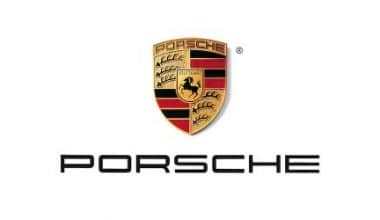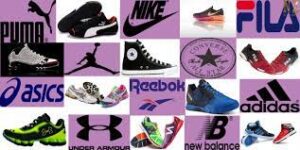Building a strong brand requires more than just having a great product or service to offer. The rest is as simple as making sure your clients can immediately identify your brand whenever they encounter key components. Brand recognition is the extent to which consumers can identify an organization by its symbol or catchphrase alone, as opposed to being aware of its name. Having a well-known brand that stands for what the company sells is crucial in reaching out to new customers. Mastering the art of branding can help you win over customers, boost revenue, and set your company apart from the competition. The key to making it through the next phases or years in business may lie in grasping why brand recognition is important and how it differs from brand awareness (brand recognition vs brand awareness). Here’s all you need to know about brand recognition, the strategy, and examples.
Read Also: 21+ TOP BRAND NAME: [Free Tip] How to Generate It & Guide
What is Brand Recognition?
Brand Recognition is consumers’ capacity to distinguish one brand from another on the basis of the characteristics that distinguish that brand. The advertising and marketing industry generally makes use of the idea of brand recognition.
Brand recognition refers to how quickly a target audience or demographic can name a certain brand. Yet it goes beyond just being able to name a company or one of the goods it sells. Those who are familiar with a brand on a deep level also immediately identify the color scheme, logos, package design, slogans, and even tones that are associated with it.
Businesses commonly use market research to gauge or evaluate the effectiveness of their tactics for increasing brand recognition.
Let’s for instance use Coca-Cola as an example;
That goes beyond just the brand name you are accustomed to. Fonts, colors, design components, and values used by Coca-Cola in its marketing immediately make you think of the company and its goods.
In fact, you may use the term “Coke” to describe just about any soft drink, whether or not it comes from the Coca-Cola company. That is an excellent example of brand recognition.
How Brand Recognition Works
An organization’s brand can be anything from a name and logo to a catchy slogan and distinctive design elements. A company’s ability to represent itself in the minds of its customers is facilitated by its brand, making it one of the company’s most valuable assets.
Businesses spend a lot of resources working to build consumer familiarity with their brand. Businesses must aid customers in remembering their brand in order to get the benefits of brand recognition. Generally, a company marketing department develops cues, both audible and visible to assist differentiate the product or service they’re selling. Logos, colors, marks, and catchy tunes are all tools at their disposal. Taglines like “They’re magically delicious” for Lucky Charms cereal or “I’m a big kid now” for Huggies Pull-Ups diapers, as well as distinctive logos like Nike’s (NKE) swoosh or McDonald’s (MCDGolden )’s Arches, all contribute to product identification.
Several businesses conduct market research by conducting tests on focus or study groups to gauge brand familiarity and the efficacy of promotional and marketing initiatives. In these groups, recall tests may be used both with and without assistance. Even though both brands are of identical quality when it comes to similar products, brand recognition frequently leads to better sales.
When consumers are prompted to think of a certain type of good, their brains automatically associate that category with a specific brand name. Recalling a brand’s name is an indication of loyalty more so than mere familiarity with the name. When given a specific product, for instance, the average person is more likely to recall a specific brand name than when given a broad category. Brand recall is the ability to remember a brand without any prompting.
What Are the 5 Stages of Brand Recognition?
Basically, it doesn’t happen overnight that your clients start to associate your brand with a trusted household name.
There are several steps or stages involved in the process of brand recognition;
- Awareness
- Preference
- Reputation
- Trust
- Loyalty
Brand Recognition Strategy
Why do some companies remain successful for decades while others fail and disappear? Sustaining a successful brand involves constant brand and or product development, which takes time and resources.
The key to success, regardless of how famous your company is or what it sells, is to ensure that customers always prefer to do business with you. Hence, to stay relevant in today’s world, you need to constantly improve and update your approach and brand recognition strategy.
Maintaining or re-establishing your brand’s health is essential to your company’s long-term prosperity. However, what does it take and how do you achieve it?
Getting your company out there is the first step in building brand loyalty. After all, marketing is a case of “out of sight, out of memory”! Now that you have a clear understanding of why having a brand recognition strategy is important, here are some of the best suggestions for maintaining contact with your target audience.
#1. Develop a Recognizable Brand Voice
Although catchy graphics and attention-grabbing slogans are crucial components of developing a brand, you shouldn’t discount the significance of giving your brand a voice.
Discover the essence of your brand and create a unified voice that reflects it. However, it is one thing to create it, it’s another to learn how to continuously use it after that. Use it in all of your online content, including your advertising, blog entries for your business, as well as social media accounts.
The ability to communicate with your audience through a clear, distinguishable voice is without a doubt crucial.
#2. Integrate Your Basic Principles With Your Products
Generally, consumers of today demand more from their products than just high-quality goods that deliver on their promises. They need to believe in what your brand stands for and represents before picking you because they want to feel like their decisions matter.
Therefore, when developing the messaging for your brand, try to be genuine. Then, focus on making distinct, obvious linkages between the public’s access to your company’s goods and services and its essential beliefs. Your products and services should always be exactly in line with your brand’s messaging.
#3. Meet Your Customers Where They Live Online
A strong social media presence is now more than simply a good idea. From the perspective of brand recognition, your brand might as well not exist if it isn’t present on social media.
However, each social media platform has advantages and disadvantages, so research your target market and find out where they hang out online.
When you arrive, provide them with a first-rate experience. Provide relevant, enjoyable material with your target audience that is on-brand and valuable. In addition, engage your audience, and when they do, respond with grace and responsiveness.
#4. Test Your Efforts and Adjust Your Plan as Necessary
Even the most effective branding techniques take time to develop. Instead, they begin with a few sound hypotheses and testable concepts.
The marketers behind them then examine the data to determine what is effective and what is not. They then adjust their continuing strategies as necessary.
It’s also crucial to stay up to date with social trends and business changes. Stay informed on the topics and factors that motivate your customers. Bring in fresh approaches to assist your brand to become even more aligned with what people want.
Familiarity is basically the key to great brand recognition, and it begins when you integrate yourself into the daily lives of your target market. Meet them where they are, use language that connects with them, and pay attention when they express their desires.
What Are the 4 Types of Branding Strategies?
You can ensure the long-term success of your brand by adhering to these four guidelines. They play to our dual natures as creatures of habit who find solace in the known and who are also intrigued by the unfamiliar.
- Product/range extension
- Brand extension
- Multi-brand
- New brand
What Are the Three Levels of Brand Recognition?
The 3 basic levels of brand recognition are;
Brand recognition
Brand preference
And, brand insistence
Why Is Brand Recognition Important
Generally, several businesses offer identical products or services. A company’s brand and the extent to which consumers recognized it are two of the most important differentiating factors in the market.
Let’s pretend two businesses sell the same thing, like training sneakers. The sneakers are virtually identical to one another. Customers are more likely to purchase from a famous company than one they are unfamiliar with. Therefore a brand’s name recognition provided it’s favorable might be a deciding factor.
One firm may fare better than another because of the strength of its brand name. As a result, consumers will always seek to Nike before any other brand when shopping for a new pair of running shoes.
Although increased profits are one of the many benefits of strong brand recognition, this is far from the sole one.
Nevertheless, here are some other reasons why a strong brand recognition strategy is important and beneficial to your business.
#1. It Help Increases Your Audience’s Faith in You
Think for a moment about the companies you respect and believe deserving of your patronage, whether or not you have previously purchased their products.
You know who they are and what kind of standing they have in the community. As a result, if you ever find yourself in the market for a good or service they offer, you’d probably pick them over a comparable business you’ve never heard of.
The same is true of your clients. When given the option, consumers are more inclined to go with a brand that they are already familiar with and confident in.
#2. It Raises the Product’s Value in the Eyes of the Buyer
It goes without saying that Coke and Pepsi are two incredibly popular cola brands. Even though Coca-Cola sells more and performs better, blind taste tests show that Pepsi is superior.
Given that Pepsi has been shown to taste superior, why do so many individuals pick Coke instead of Pepsi? It’s undeniably the brand equity that Coca-Cola has built up over the years.
People will pick the Coca-Cola brand even when a better option is available. And this is basically because it is so familiar and widely associated with ideas like quality and enjoyment.
#3. It Raises Consumer Perceptions of Your Products’ Value
Obviously, it’s one thing to get individuals to the point where they recognize and possibly trust your brand. Another is to persuade them that your things are worth much more than what you charge for them.
Customers are more likely to part with their cash when they have confidence in your brand’s reputation.
Apple is a fantastic illustration of a brand that has this notion dialed in. Their wares typically cost several times as much as comparable alternatives.
Yet, their customers not only buy them but also camp up overnight at the entrance to an Apple Store to be among the first to get their hands on the newest models.
Brand Recognition Examples
#1. Coca-Cola
One could ask how are brands of cola different from one another. According to estimates, Coca-brand Cola’s name has an 80 percent greater value than its actual contents. Coke has done much more than just sell beverages in its more than 100-year history. The corporation has established foundations, cooperated with major events like the Olympics, as well as sponsoring the London Eye (with matching red lights, naturally).
Coke’s strategy of offering incentives to retailers around the globe to include its logo on its signage is maybe its greatest success.
#3. McDonald’s
McDonald’s may be best known for its hamburgers, but the fast food giant has surprisingly little in the way of culinary mythology or iconography. Instead, if you ask the general public to describe the McDonald’s logo, the phrase “the golden arches” would likely come up more than often.
These arches originally served as large, 25-foot signposts that motorists could see from the road, inviting them in as well as depicting the letter ‘M’. When people instantly recognize your brand without you having to say what it is, as is the case with Nike and their iconic “Swoosh,” you know you’ve succeeded in building brand recognition.
#3. IKEA
Research conducted by signs.com asked 156 middle-aged Americans to draw numerous well-known brand logos from memory. Just 30% were able to sketch an almost perfect reproduction of an IKEA product, while 56% produced “excellent” drawings.
Crucially, almost everyone got the colors right, demonstrating the importance of color in branding and the brilliance of IKEA’s decision to continue using the same blue and yellow color scheme in their physical locations as they do in their logo.
Brand Recognition vs Brand Awareness
Both brand recognition and brand awareness (brand recognition vs brand awareness) share many similarities but also have significant differences.
Yes, brand awareness is different from brand recognition. It’s important to note that despite appearances, they’re not the same. However, they definitely have a connection.
Keep in mind that the visual and auditory clues individuals use to identify a brand are examples of brand recognition. Conversely, “brand awareness” refers to familiarity with a brand’s existence. This measures the level of familiarity the average consumer has with a given company and its offerings.
Recognition of a brand occurs after consumers get familiar with it. For instance, the ubiquitous McDonald’s logo could not be instantly recognizable or associated with McDonald’s products if consumers were unfamiliar with the McDonald’s brand.
What Are the 7 PS of Branding?
The 7 Ps of branding are;
- Product
- Price
- Promotion
- Place
- People
- Physical evidence
- Processes
What Are the 6S of Branding?
Although manufacturing and marketing are two very different processes, 6S is about inefficiency, which occurs in every element of a firm. Its tenets are universally applicable so long as they are adapted to the specific economic or business activity at hand.
- Seiri (sort)
- Seiton (straighten)
- Seiso (shine)
- Seiketsu (standardize)
- Shitsuke (sustain)
- Safety
Conclusion
Several businesses provide identical products or services. And a company’s brand and the extent to which it is recognized by consumers are two of the most important differentiating factors in the market. Increasing your brand recognition will help boost brand equity, or how valuable your brand is in comparison to others, by raising your brand’s general profile in comparison to your rivals.
Making that decision will benefit both your products as well as your company as a whole in a number of ways.
Related Articles
- BRAND STRATEGY: Definition, Examples & Components of Branding
- Best Employee Recognition Ideas In 2023
- 25+ Employee Recognition Ideas: Creative Ideas For Virtual & Monthly Recognition Awards
- Revenue Recognition: How GAAP & ASC 606 Works
- Revenue Recognition Principle (GAAP) and The New Revised Principle






